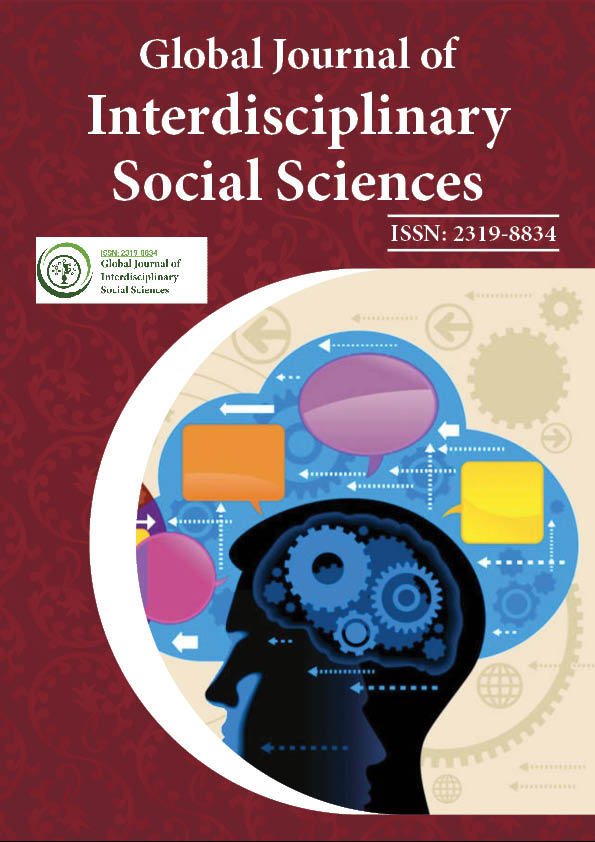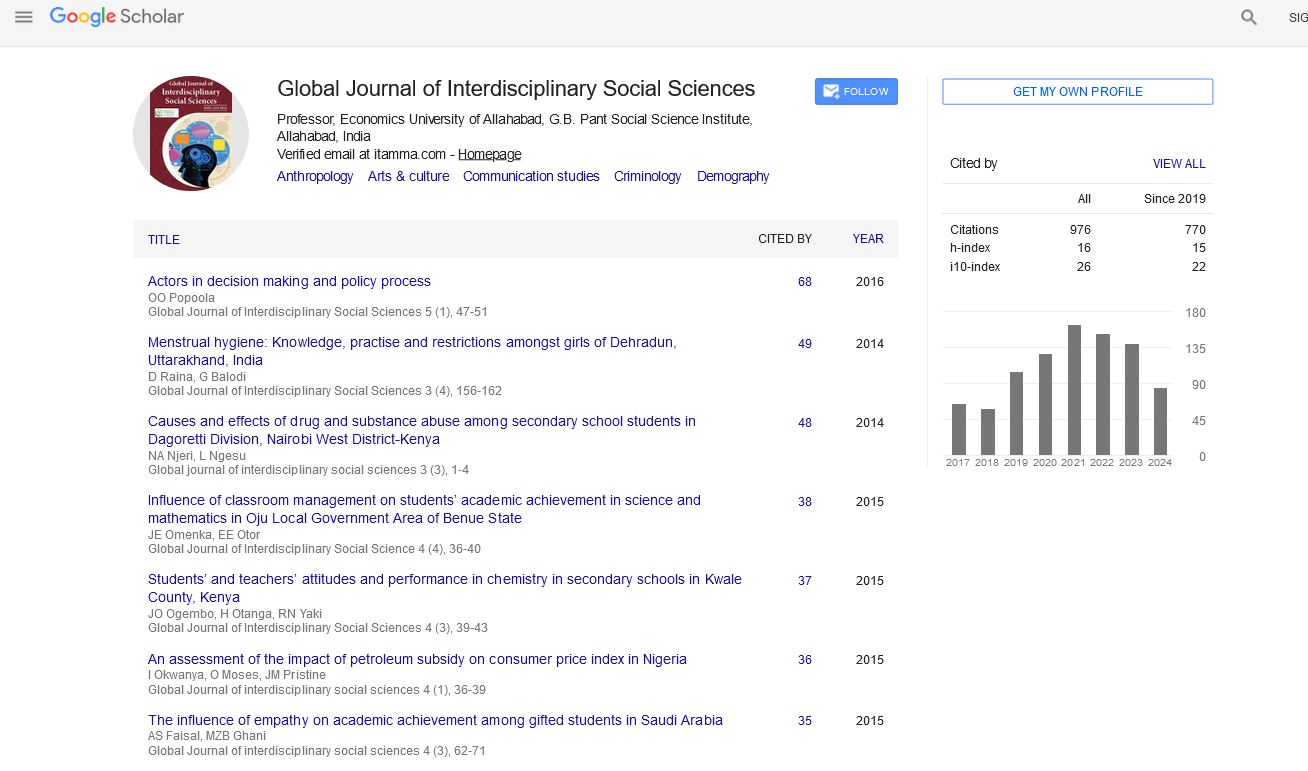Indexed In
- JournalTOCs
- Google Scholar
Useful Links
Share This Page
Journal Flyer

Open Access Journals
- Agri and Aquaculture
- Biochemistry
- Bioinformatics & Systems Biology
- Business & Management
- Chemistry
- Clinical Sciences
- Engineering
- Food & Nutrition
- General Science
- Genetics & Molecular Biology
- Immunology & Microbiology
- Medical Sciences
- Neuroscience & Psychology
- Nursing & Health Care
- Pharmaceutical Sciences
Opinion Article - (2023) Volume 12, Issue 2
Sociolinguistics: The Diversity of Language and Culture
Angelica Galante*Received: 15-May-2023, Manuscript No. GJISS-23-22445; Editor assigned: 17-May-2023, Pre QC No. GJISS-23-22445(PQ); Reviewed: 31-May-2023, QC No. GJISS-23-22445; Revised: 07-Jun-2023, Manuscript No. GJISS-23-22445(R); Published: 14-Jun-2023, DOI: 10.35248/2319-8834.23.12.053
Description
Language serves as the foundation of human communication, exceed borders and cultures. Sociolinguistics, the interdisciplinary field that examines the relationship between language and society, offers great perception into how language reflects and influences the relationship between individual interactions and group level behaviors. In this opinion article, we will explore the significance of sociolinguistics in understanding language variation, language attitudes, language policy, and the impact of language on identity and diversity. The diversity of language and culture, we can help greater empathy and cooperation in an increasingly interconnected world.
Language variation
Sociolinguistics celebrates the richness of language variation within and across communities. Regional languages, accents, and the practice of alternating between two or more languages are inherent to human speech, reflecting the unique cultural and regional identities of individuals. Instead of dismissing nonstandard varieties, we must recognize their native value, as they represent the lived experiences and culture of diverse populations.
Language varieties and stereotypes
Sociolinguistics helps us understand and illuminate the varieties in different language and stereotypes that we carry, which can have an impact on how we recognize and judge others based on their language use. By studying language varieties and stereotypes, sociolinguistics provides the behavior of groups that result from the interactions of individual group members as well to the study of the relationship between individual interactions and group level behaviors of language and how language choices can affect our interactions and judgments about individuals and groups. Linguistic prejudice, whether based on accents, dialects, or foreign languages, can lead to differentiation and social exclusion. Through awareness and education, we can challenge these biases and prepare a more accepting environment where linguistic differences are seen as enriching rather than division.
Language policy
Language policies impact social relations, education, and access to opportunities. Sociolinguistics explores the implications of language planning and policies, especially in multilingual societies. By promoting bilingual education and recognizing minority languages, we empower marginalized communities and preserve cultural traditions. Highlighting linguistic rights is essential in an inclusive society.
Language and identity
Language majorly changes individual and group identities. Sociolinguistics explores how language choices can influence how individuals identify themselves and are recognized by others. Multilingualism, where individuals are proficient in multiple languages, allows for easy interactions and a deeper comprehension of diverse perspectives. The ability to switch between languages during conversations, acts as a barrier that facilitates connections between people from different language backgrounds, explores mutual understanding and promotes a reason of unity among linguistic diversity. By recognizing the significance of language in identity formation, we cultivate a greater thought of empathy and interconnectedness.
Language in the digital age
The advent of the internet and social media has revolutionized language use and communication. Sociolinguistics examines the impact of technology on language, such as the development of internet slang and the combining of languages in online interactions. The digital space offers both opportunities and challenges for language diversity, requiring us to adapt to new forms of expression while protecting the richness of traditional languages.
The role of language in globalization
Sociolinguistics is indispensable to understanding the role of language in the era of globalization. As societies become more interconnected, languages come into contact and influence one another. Language contact and borrowing enrich linguistic diversity, allowing cultures to exchange ideas. Sociolinguistics highlights the need to promote multilingualism as a main objective for cross-cultural communication and cooperation.
Linguistic equality and education
Equal access to quality education is closely secured to linguistic equality. Sociolinguistics promotes for inclusive language policies in education that promote bilingualism and cater to the linguistic needs of diverse learners. Recognizing and valuing all languages spoken in a society fosters greater educational equity and empowers individuals to achieve their full potential.
Conclusion
In conclusion, sociolinguistics is an intellectual field of study that demonstrates the inseparable connection between language and society. By including language variation, challenging language biases, and supporting inclusive language policies, we can build a more compassionate and inclusive world. Linguistic diversity enriches our cultural tapestry and enhances our ability to understand and appreciate one another. Incorporating sociolinguistics means including the human determination of unity through the diversity of language and culture. As we recognize the significance of language in forming identities and raising social unity, we take an essential step towards creating a balanced global community.
Citation: Galante A (2023) Sociolinguistics: The Diversity of Language and Culture. 12:053
Copyright: © 2023 Galante A. This is an open-access article distributed under the terms of the Creative Commons Attribution License, which permits unrestricted use, distribution, and reproduction in any medium, provided the original author and source are credited.

